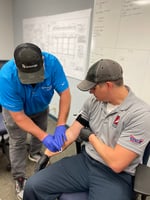
In confined space work, ensuring air quality is a top priority. With directives from OSHA and consensus recommendations from ANSI & NFPA, understanding the ins and outs of atmospheric monitoring is key. This article will briefly review what OSHA requires as well as what ANSI, NFPA and Roco recommend for practices that ensure worker safety remains the top priority in working in these challenging environments. While the OSHA General Industry standard allows for periodic monitoring and sets no exact timespan between testing – however, as a safer way, Roco recommends continuous air monitoring any time workers are in the space.
 OSHA 1910.146 refers to testing the internal atmosphere before an employee enters the space and testing as necessary to maintain acceptable entry conditions. Testing should be based on the hazard assessment for a given space as well as how rapidly those hazards could cause a change in the atmosphere, which may require additional action for safe entry.
OSHA 1910.146 refers to testing the internal atmosphere before an employee enters the space and testing as necessary to maintain acceptable entry conditions. Testing should be based on the hazard assessment for a given space as well as how rapidly those hazards could cause a change in the atmosphere, which may require additional action for safe entry.
OSHA’s Confined Spaces in Construction (1926-Subpart AA) also references monitoring frequency. It states continuous monitoring is required unless periodic monitoring is sufficient to ensure entry conditions are maintained, or continuous monitoring is not commercially available.
Note: Also take into consideration any previous work activities that may have introduced atmospheric hazards into the space as well as any known history of hazardous atmospheric conditions.
"Roco strongly encourages continuous monitoring while workers are inside a permit-required confined space."
Looking at best practice consensus standards, ANSI Z117 advocates for continuous monitoring in situations when a worker is present in a space where atmospheric conditions have the potential to change. 
The national consensus standard, NFPA 350 Guide for Safe Confined Space Entry and Work 2022, also generally refers to “continuous air monitoring” when possible. Here’s a quote from NFPA 350, Section 7.13.1 (www.nfpa.org), Continuous Atmospheric Monitoring, “Atmospheric conditions can change quickly or gradually over time; without continuous atmospheric monitoring, air contaminants may increase, or the oxygen percentage may decrease or increase, creating dangerous confined space atmospheric conditions.” NFPA adds, “Entrants, Attendants, and other personnel may be unaware of changing conditions if the air quality was only initially monitored and determined to be acceptable. The atmosphere within and outside the confined space should be monitored continuously to ensure continued safe working conditions.”
PRE-ENTRY TESTING
Although OSHA does not define a specific timeline to conduct pre-entry monitoring, Roco uses as a guideline that a “baseline test” is to be conducted approximately 30 minutes prior to the entry and then again immediately prior to entry. If ventilation is being used as a control measure for atmospheric hazards, initial atmospheric monitoring should be conducted without ventilation to establish a baseline atmosphere.
A comparison of these readings could indicate that atmospheric changes have occurred inside the space. If a space has been vacated for a period of time, it is recommended that similar baseline testing be repeated. This is critical as it may reveal the presence of previously unrecognized or unanticipated atmospheric hazards.
Again, confined space work is inherently hazardous – and atmospheric hazards are a leading cause of fatalities. Do everything you can to keep your people safe. Don’t let your guard down even for a minute!
Additional Resources:
Frequently Asked Questions: OSHA PRCS Standard Clarification
How much periodic testing is required?
The frequency of testing depends on the nature of the permit space and the results of the initial testing performed under paragraph (c)(5)(ii)(c). The requirement in paragraph (c)(5)(ii)(F) for periodic testing as necessary to ensure the space is maintained within the limits of the acceptable entry conditions is critical. OSHA believes that all permit space atmospheres are dynamic due to variables such as temperature, pressure, physical characteristics of the material posing the atmospheric hazard, variable efficiency of ventilation equipment and air delivery system, etc. The employer will have to determine and document on an individual permit space basis what the frequency of testing will be and under what conditions the verification testing will be done.
What does testing or monitoring "as necessary" mean as required by 1910.146(d)(5)(ii) to decide if the acceptable entry conditions are being maintained?
The standard does not have specific frequency rates because of the performance-oriented nature of the standard and the unique hazards of each permit space. However, there will always be, to some degree, testing or monitoring during entry operations which is reflective of the atmospheric hazard.
Some of the factors that affect frequency are:
* Results of test allowing entry.
* The regularity of entry (daily, weekly, or monthly).
* The uniformity of the permit space (the extent to which the configuration, use, and contents vary).
* The documented history of previous monitoring activities.
* Knowledge of the hazards which affect the permit space as well as the historical experience gained from monitoring results of previous entries.
Knowledge and recorded data gained from successive entries (such as ventilation required to maintain acceptable entry conditions) may be used to document changes in the frequency of monitoring.
Learn More




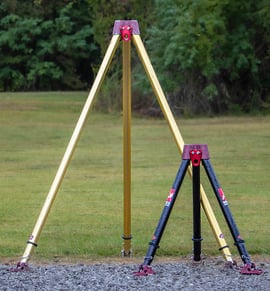 Sleek, portable and mission-driven – the new
Sleek, portable and mission-driven – the new 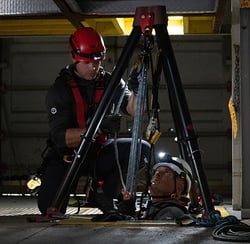 Key Features:
Key Features: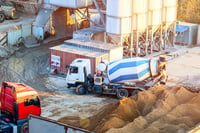 CANTONMENT, FL
CANTONMENT, FL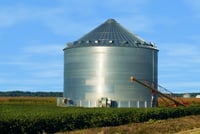 COLQUITT, GA
COLQUITT, GA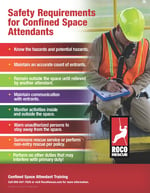
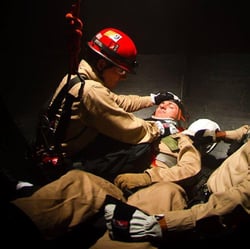 Simply put,
Simply put, 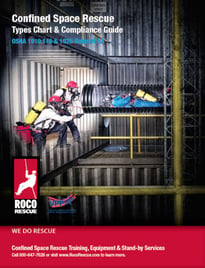
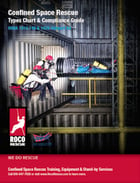
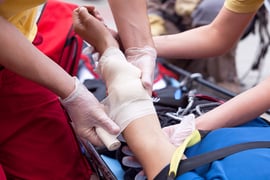
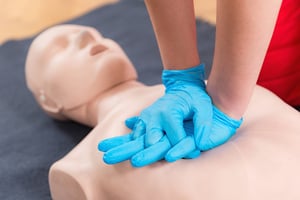 While basic first aid and CPR may be the minimum required for rescue personnel
While basic first aid and CPR may be the minimum required for rescue personnel 
